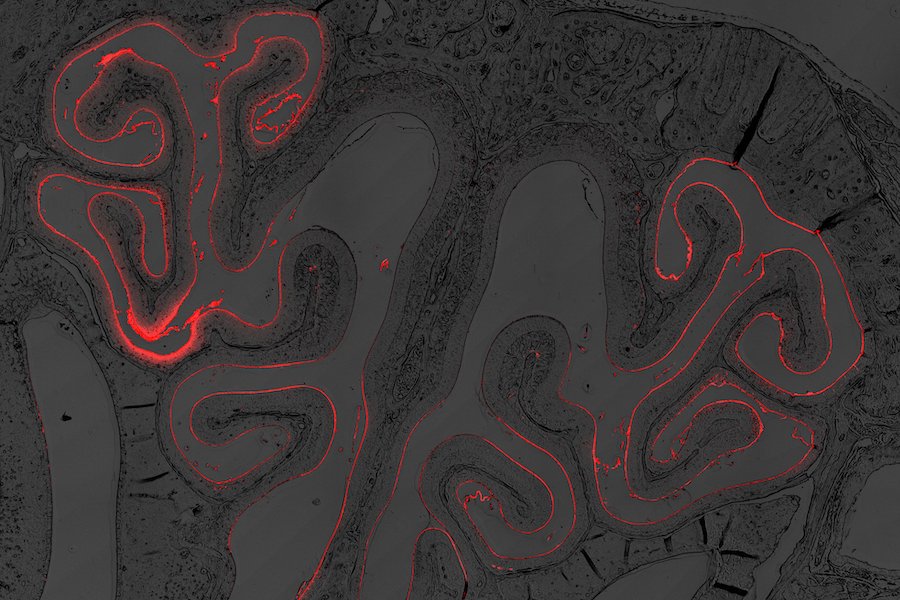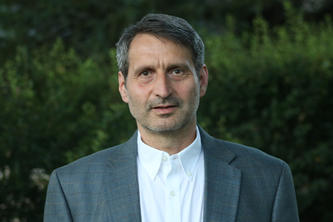New method of nasal vaccine delivery could lead to better vaccines for HIV and COVID-19

A new study, published in Science Translational Medicine, showcases a new way to effectively deliver vaccines through mucosal tissues in the nose that could lead to better protection against pathogens like human immunodeficiency virus (HIV) and SARS-CoV-2, the virus that causes COVID-19.
Historically, nasal vaccines have been difficult to make successfully. The mucus in the nose typically clears out or breaks down the vaccine’s components, such as protein antigens, before they can access underlying tissues to activate the body’s immune cells.
The researchers found a way to help vaccine antigens bypass the mucosal barriers in the nose by engineering them to bind onto a protein called albumin, which naturally occurs in the human body and has the ability to get around these roadblocks. The antigens could then effectively “hitchhike” on albumin to get to their destination to start activating an immune response.
Nasal vaccines have the potential to generate even more immunity than current vaccines, because for many diseases that are transmitted through the upper respiratory system, such as COVID-19, nasal vaccines have the potential to trigger immune responses in the exact areas of infection — the nose, mouth and lungs.
“Traditional vaccines that are injected are not usually geared toward establishing immunity in these mucosal tissues,” explained Brittany Hartwell, first author on the paper and an assistant professor in the U of M Department of Biomedical Engineering. “They're more geared toward establishing immunity in the blood — sort of like a backup defense. But the idea of establishing immunity in the mucosal areas, like the nose, is that it establishes more of a frontline defense that can better protect against transmission of these diseases.”
The new vaccine proved effective at generating immunity not just in the nose, but in other mucosal tissues of the body as well, which include the upper respiratory system, lungs and genitourinary tract. The latter is especially relevant for vaccinating against a virus like HIV, which is transmitted through those sites.
“This is really significant for the field of mucosal vaccination,” Hartwell said. “It shows something new, that we’ve designed a vaccine capable of overcoming barriers to delivery that have historically plagued the development of other mucosal vaccines. It’s particularly relevant right now because we’re all living in the midst of the COVID pandemic. And as long as there’s spread and transmission, the virus has a chance to evolve into new variants with the potential to be harmful. This research shows the development of a different kind of vaccine that could provide even better protection than what we currently have by blocking transmission, preventing us from catching and passing the virus onto others.”
Hartwell is continuing to study and develop this new vaccine technology in her lab at the U of M and hopes to adapt it to other diseases and illnesses in the future.
The research was funded by the National Institutes of Health’s National Institute of Allergy and Infectious Diseases; the National Cancer Institute; the Marble Center for Cancer Nanomedicine; the U. S. Army Research Office through the Institute for Soldier Nanotechnologies at the Massachusetts Institute of Technology; the Ragon Institute of MIT, Massachusetts General Hospital, and Harvard University; and the Bill and Melinda Gates Foundation.
-30-
About the College of Science and Engineering
The University of Minnesota College of Science and Engineering brings together the University’s programs in engineering, physical sciences, mathematics and computer science into one college. The college is ranked among the top academic programs in the country and includes 12 academic departments offering a wide range of degree programs at the baccalaureate, master's, and doctoral levels. Learn more at cse.umn.edu.
- Categories:
- Science and Technology





